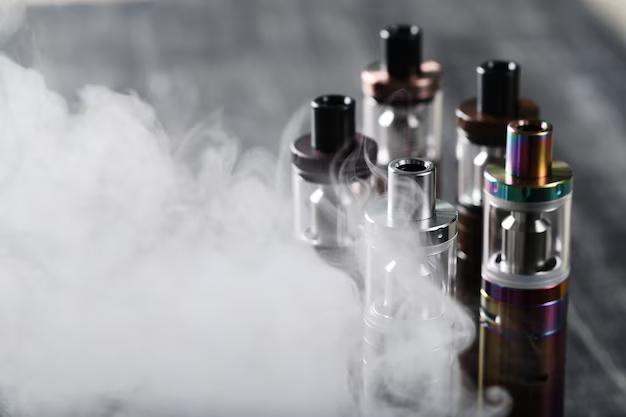Understanding Regulations on Nicotine Concentration Levels

Jordyn Mastrodomenico is a counselor in New Jersey. She evaluates patients using many different procedures, in order to determine what treatments must be carried out in order to properly assess their symptoms. Counselors provide consultation for each patient and their families.
Nicotine is a potent stimulant found primarily in tobacco plants and widely used in cigarettes, e-cigarettes, nicotine replacement therapies, and other smoking cessation tools. As public health concerns regarding smoking and vaping continue to grow, many governments across the world have introduced regulations on nicotine concentration levels in consumer products. These regulations are not only aimed at reducing nicotine addiction, especially among young people, but also at ensuring safer consumption levels for those seeking alternatives to traditional smoking. In this blog, we explore the evolution, rationale, and implications of nicotine concentration regulations around the world.
In the ever-evolving world of high-performance supplements, few products stand out like the hayati pro ultra 25000. This powerful formula is designed for individuals seeking enhanced stamina, quicker recovery, and overall improved vitality. Crafted with cutting-edge ingredients, it supports optimal energy levels throughout intense physical activities. Whether you're an athlete pushing boundaries or someone pursuing daily wellness goals, this supplement integrates science-backed components to deliver results. Its fast absorption and lasting effects make it a preferred choice among fitness enthusiasts. Experience the synergy of nature and innovation—unlock your true potential with a supplement built to meet today’s demanding lifestyles.
The Role of Nicotine Concentration in Addiction
Nicotine is the primary addictive compound in tobacco and many vaping products. It affects the central nervous system and has a profound impact on brain chemistry, leading to dependence. The higher the concentration of nicotine in a product, the more quickly a user can become addicted. Additionally, high-nicotine products deliver stronger, faster "hits," reinforcing their addictive potential. Therefore, regulating nicotine concentrations is considered a critical measure in tobacco harm reduction strategies.
Global Regulatory Landscape
Regulatory bodies worldwide have responded to the public health risks of nicotine by implementing varying limits on nicotine concentration levels in products. These regulations often differ based on the type of product, the delivery mechanism, and the intended audience.
European Union
The EU is one of the pioneers in setting strict regulations through the Tobacco Products Directive (TPD). Under the TPD:
- E-liquids sold in the EU must not exceed a nicotine concentration of 20 mg/mL.
- E-liquid bottles are limited to 10 mL volumes for sale.
- Refillable e-cigarette tanks must not exceed a 2 mL capacity.
These rules aim to prevent overconsumption and limit the appeal of vaping to non-smokers, especially youth.
United States
In the U.S., the Food and Drug Administration (FDA) regulates nicotine-containing products under the Family Smoking Prevention and Tobacco Control Act. While there is no federally mandated cap on nicotine concentration for vaping products, the FDA has intensified scrutiny of high-nicotine disposable e-cigarettes that appeal to teens.
Recently, the FDA has also considered capping the nicotine levels in cigarettes themselves to render them "minimally addictive." Such regulation would represent a seismic shift in tobacco control policy.
United Kingdom
The UK, although no longer under the EU’s jurisdiction post-Brexit, has retained many of the TPD’s restrictions. The 20 mg/mL limit still applies, and the country continues to enforce tight packaging and labeling rules.
Interestingly, the UK promotes e-cigarettes as a tool for smoking cessation, and the government has been relatively more supportive of vaping compared to other countries, provided products comply with safety and concentration standards.
Canada
Health Canada regulates nicotine content in vaping products under the Tobacco and Vaping Products Act (TVPA). As of July 2021, a regulation came into effect limiting nicotine concentration in vaping products to 20 mg/mL, aligning with the EU's standard. This move was made in response to increasing youth vaping rates and aimed to make vaping products less attractive to non-smokers and youth.
Australia
Australia takes a stringent approach to nicotine regulation. Nicotine-containing e-liquids and vaping devices can only be legally obtained with a doctor’s prescription. The Australian Therapeutic Goods Administration (TGA) oversees these rules. This tight control is driven by a strong precautionary approach to potential health risks from vaping.
Rationale Behind Concentration Limits
Nicotine concentration regulations are primarily driven by three main public health concerns:
- Preventing Youth Initiation: Numerous studies have shown that youth are especially sensitive to nicotine and can become addicted more quickly. By capping nicotine levels, regulators aim to reduce the risk of experimentation leading to addiction.
- Reducing Dependence: Lower nicotine concentrations can help individuals gradually reduce their nicotine intake. This approach supports smokers who are trying to quit, as they can use lower-dose products without exposing themselves to excessive nicotine.
- Limiting Health Risks: While nicotine is less harmful than the tar and carcinogens found in combustible cigarettes, it is not harmless. High doses can contribute to cardiovascular problems and other long-term health effects. Regulation helps to mitigate these risks.
Industry and Consumer Responses
Not surprisingly, these regulations have prompted strong responses from both the vaping industry and consumers. Manufacturers have had to reformulate their products, reduce product sizes, and redesign packaging to comply with the law. For some companies, particularly those selling high-nicotine salt-based e-liquids, these changes have significantly altered business strategies.
Consumers, on the other hand, have shown mixed reactions. Some vaping enthusiasts argue that lower nicotine concentrations reduce satisfaction, prompting users to vape more frequently or switch to illicit high-nicotine products. Others, especially smokers using e-cigarettes to quit, appreciate the structured approach and guidance.
An unintended consequence of tight regulation has been the emergence of black-market or unregulated products. In countries like the U.S., where some flavored and high-nicotine vapes are banned or under scrutiny, illicit markets have responded quickly, complicating enforcement and public health efforts.
Scientific and Public Health Perspectives
Public health organizations, including the World Health Organization (WHO), advocate for stricter control of nicotine delivery devices. However, experts are divided. Some support the harm reduction potential of e-cigarettes and argue that overly restrictive nicotine caps may discourage smokers from switching to safer alternatives. Others emphasize the need for tight control to prevent a new generation from becoming nicotine dependent.
A growing body of research suggests that regulation can be effective if accompanied by education and support systems. Limiting nicotine levels should be part of a broader strategy that includes public awareness campaigns, cessation support, and responsible marketing restrictions.
The Future of Nicotine Regulation
The regulation of nicotine concentration levels is likely to evolve in response to new data, technology, and public behavior. Some trends that could shape the future include:
- Stricter Youth Protections: Governments may introduce even lower concentration limits or restrict specific flavors that appeal to teens.
- Global Harmonization: As vaping products are traded globally, there may be calls for more consistent international standards.
- Innovative Delivery Systems: New technologies may allow for better control of dose per puff, prompting a shift from concentration-based to dosage-based regulation.
- Personalized Nicotine Limits: In a future where digital health tools and smart vaping devices become common, regulation could shift toward more individualized control.
Conclusion
Regulations on nicotine concentration levels play a crucial role in balancing public health protection with individual choice and harm reduction. While approaches vary across regions, the underlying goal is consistent: to reduce nicotine addiction, especially among youth, and to create a safer framework for nicotine consumption. As science, public health priorities, and consumer behavior evolve, so too will these regulations. Policymakers must continue to adapt, ensuring regulations remain effective and grounded in evidence.








